By Rick VanSickle
Standing on the back of Brian Schmidt’s pickup truck, the sun setting quickly on the fall horizon, there is a surreal sense of calm among the Cabernet Franc vines.
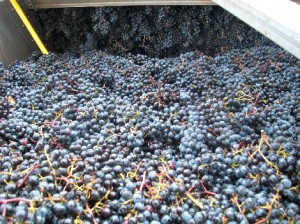
Which is in stark contrast to chaos back at the Vineland Estate winery where Schmidt’s team is busy bringing in another harvest, a grape crop many predict will be Niagara’s best yet.
The annual harvest dance, three to four weeks earlier than previous years because of a long, hot summer, is being conducted throughout Niagara. Long days and long nights of grapes picked, sorted, crushed and sent on to various tanks and barrels for fermentation. Winemakers will spend the winter and years to come shaping them into wonderful red and white wines for us to enjoy.
Harvest is a fascinating time at the winery. A skilled and choreographed ballet of grapes arriving in huge crates, picked by seasonal workers under the direction of vineyard managers and winemakers, and placed in order on crush pads from Beamsville to St. Davids.
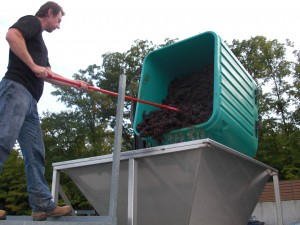
There is no timetable during harvest. The weather decides everything. Once the call is made that a variety, or vineyard, is ripe for the picking, provided there is no rain, the crop is either hand picked or machine harvested and brought in to be sorted and crushed as quickly as possible.
Winemakers do not want the grapes to sit in containers for any length of time and often work well until into the wee hours to crush everything sitting in bins.
I’m watching as Schmidt, the longtime winemaker at Vineland Estates, moves methodically on the crush pad, guiding his cellar help as fresh containers of Pinot Meunier, one after another, slowly get processed through the de-stemmer to be crushed and sent through pumps to tanks and, often, big oak vats inside the winery.
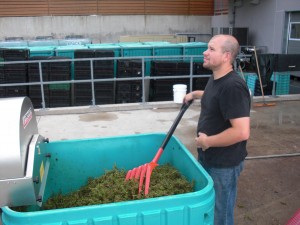
Schmidt walks at a speedy clip and it’s hard to keep up. A word here and a word there to his assistant winemaker, Luis Fonteboa, and his lab technician, Ana Fonteboa (a married Cuban couple who have found a comfortable home at Vineland Estate and Niagara), keeps the process moving, bin after bin, variety after variety.
He works with a core crew of four people in the winery, two workers in the vineyard, seasonal pickers and what he calls “floaters†who come in during the harvest to help out around the winery. Work starts at 8 a.m. and sometimes doesn’t stop until two in the morning.
It’s all about the grapes, says Schmidt, and it’s a fine balancing act to pick at the right time. Waiting always poses a risk, either from freezing temperatures or a prolonged rainy front.
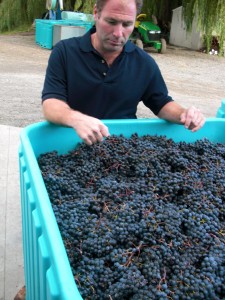
With the excellent 2010 harvest, good across both the white and red varieties, Schmidt says he could go out and pick all the red grapes right now “and they’d be good. But what I’m looking for is great.â€
Winery staff work hard during crush, but they eat well as each winery prides itself on the putting on a healthy harvest meal during much needed breaks in the crush.
We enjoy a big meal of spicy sausage, potato salad and delicious gooey cheese in the staff room, prepared by the chef at The Restaurant at Vineland Estate Winery.
Then it’s quickly back to work, the endless processing of grapes, the endless sampling from tanks by Schmidt, the endless “punching down†of the cap on grapes sent to wood vats for barrel fermentation and the endless testing as grapes undergo fermentation.
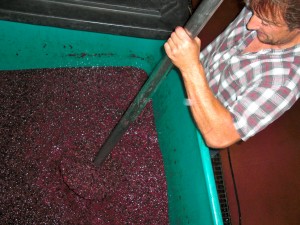
Amazing to an observer of this miracle of winemaking is how the winemaker keeps track of all the different blocks and parcels of grapes and how they will all be blended to make a specific wine sometime in the future.
•••
It’s not all that different on the Beamsville Bench at the Fielding Estate winery.
I catch up with Fielding Estate winemaker Richie Roberts late on a fall day nearing the end of the white grape harvest. He and his assistant winemaker, Kristen Banders, and cellar helper, Rod Lukey, are stuffing the de-stemmer with freshly-picked Pinot Gris from the Rock Pile vineyard. Banders hoist the grapes with a forklift truck and dump the bins of grapes into a stainless steel funnel, Lukey negotiates the grapes into the de-stemmer and Roberts mucks out the spent stems as he oversees the operation from start to finish.
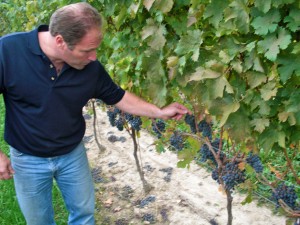
The grapes are gently steered to the single crusher that’s automatically set for a gentle, three- to four-hour crush with some skin contact.
It’s a waiting game now, as the crusher does its thing. That doesn’t mean there’s any time to rest. Lukey and Roberts head inside the winery and madly secure hoses for the endless job of pump overs, bringing the freshly crushed juice to the top of the tank and gently pumping over the crusty cap to push down the hardened top layer. Over and over.
There’s also the laborious task of constantly cleaning tanks, pushing down the cap by hand on the barrel ferments and moving hoses up, down and all around the winery.
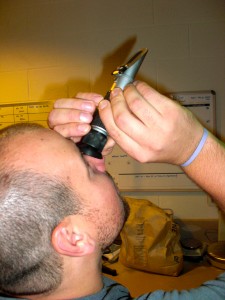
Roberts is constantly tasting tank samples of the fermenting grapes and, on this day, like most days, is joined by Curtis Fielding, whose family owns the estate, and is never far from the winery during crush.
Everyone looks forward to the big meal of the day.
Roberts has ordered out to the August Restaurant in Beamsville, three orders of the maple BBQ pork tenderloin with Niagara cherry glaze and one order of grilled natural beef striploin with a brandy peppercorn sauce for Roberts.
It’s a delicious feast that ends with a selection of cheeses despite the sign on the staff room fridge that clearly reads: DO NOT eat the cheese.
•••
Crush in Niagara is about working hard, long hours, eating well and tasting an endless amount of wine in various forms of fermentation.
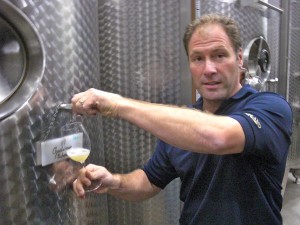
But, it’s not all hard labour. Both my experiences ended with wonderful tastings of the finished product, which, for most of us, is what it’s all about.
And here’s what I liked:
Vineland Estates Pinot Meunier 2009 ($18, 4 stars) — Schmidt thinks this variety has a big future in Niagara and has put even more effort into the 2010 production. This is the debut vintage and should find many fans with its berry-cherry-currant fruits and spice.
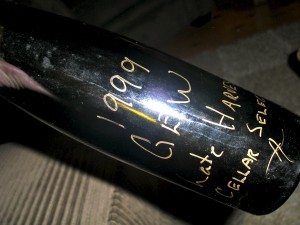
Vineland Estates Chardonnay 2009 ($13, 3.5 stars) — Are you serious? $13? Hard to beat at this price with a floral, fruity nose that turns tropical and creamy on the palate with bright acidity.
Vineland Estates Cabernet Franc 2009 ($13, 4 stars) — Schmidt has a gifted touch with Cabernet Franc, even at the entry level. Another bargain wine that is simply a delicious, fruity red with cassis, spice and soft tannins.
Fielding Estate Chosen FEW Red 2007 ($75, winery, 4.5-5 stars) — This rounds out the big three reds from Fielding’s outstanding 2007 red vintage (Meritage and Syrah are the other two). This is the first wine under “FEW†label representing the best reds from select barrels of Cabernet Sauvignon (45%), Merlot (41%), and Syrah (14%) sourced from four vineyards throughout Niagara. Huge is an understatement. The nose kicks off with smoky, leathery, savoury dark fruits and rich spices. It’s thick on the palate and tight, even after two days of decanting, with meaty, complex fruits, cocoa, licorice and an array of spice. A sensational red for lovers of this substantial long-aging style.
Fielding Estate Vignoles Icewine 2009 (not for sale, only six cases made, 4 stars) — I only mention this wine (that’s not available to the public) because it’s so damn good. The grape is popular in the Finger Lakes region but not recognized by VQA in Ontario. Roberts made a few cases from a single row of planted Vignoles and it’s gorgeous with lovely lemon, honey, apricot flavours balanced by high acids.
Yummy stuff and I hope Fielding finds a market for this wonderful wine.
Enjoy!


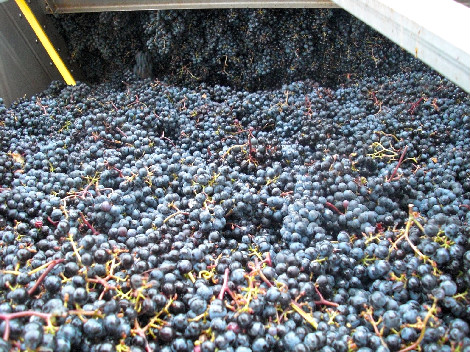




Comment here